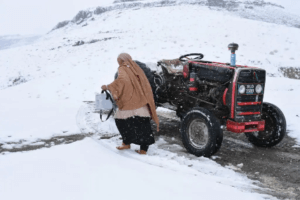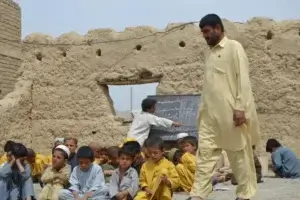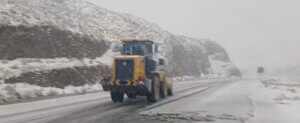Editorial:
Balochistan, the country’s largest province in terms of the area is prone to almost all types of natural disasters. Quetta, the provincial capital and various parts of the sparsely populated province have suffered natural disasters including drought, floods and earthquakes during the last one and half decades.
A recently mild earthquake measuring 5.4 on reactor scale in the province’s Washuk district near the Iranian border is yet to send any alarm bells in the power corridors. The tremors felt a couple of days ago in the wee hours damaged around 300 mud-walled houses in Killi Sajid area of Basima tehsil of Washuk district.
The provincial disaster management authority (PDMA) announced sending relief goods to the displaced people. Fortunately, no human loss was caused when earthquake tremors jolted one of the backward areas of the province since people were sleeping outside their rooms owing to scorching heat.
The earthquake has almost gone unnoticed as no provincial minister or any high-level government official has visited the area to meet the earthquake survivors and people displaced. The media too gave cold-shoulder to the damages.
Torrential rains also claimed 13 lives in Dera Bugti, Jhal Magsi, Jaffarabad and other districts of Balochistan. 907 houses were damaged, 3 water dams burst, 2 bridges and 10 communication roads were also damaged as a result of heavy rainfall. Similarly, floods in Naseerabad, Jaffarabad made half a million people homeless and destroyed over 2,000 houses during 2012.
A strong earthquake in Pakistan’s one of the famous tourist areas i.e. Ziarat killed over 200 and injured more than 300 on October 29, 2008.
In April 2013, an earthquake in Mashkail near Pak-Iran border killed dozens and injured over 100. In September 2013, a powerful earthquake measuring 7.7 on the reactor scale killed 328 people in Balochistan’s Awaran. Thousands were displaced when the powerful tremors jolted the area.
In 1935, the deadliest earthquake razed the entire Quetta city to the ground. After the earthquake, the British rulers introduced a building code, which fixed 30 feet height for buildings in the city. For some time, people followed the code. But, gradually, people violated the code and constructed more than 300 tall buildings, plazas, shopping malls, markets in the heart of Quetta city.
Based on past experiences and looming future threats of natural calamities, the Balochistan government needs to chalk out a comprehensive strategy to cope with any emergency situation. The scale of the natural calamities cannot be predicted at this point in time. However, what is humanly possible that should be done. We have to learn a lesson from Japan, Turkey and other countries when it comes to earthquakes and other natural calamities.
Mere providing relief goods, tents and blankets do not offer any solution rather a comprehensive strategy needs to be made to tackle future situations. Building code in Quetta city, which is located in the earthquake sensitive zone should be implemented strictly. Populations living in floods danger zones or water-ways should be evacuated and settled in safer places.
Above all, the PDMA should go beyond distributing relief goods and the authority should engage geologists, environmentalists and researchers to analyze, assess and review future climate dangers to sensitize policymakers.






